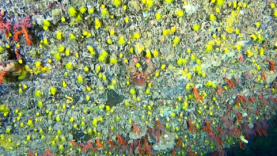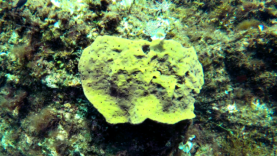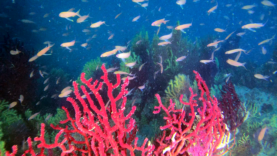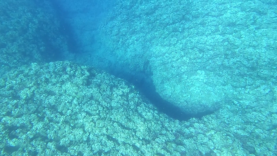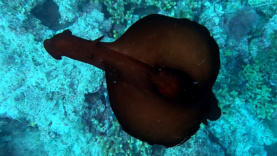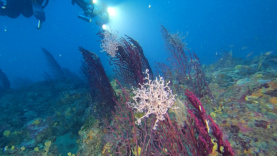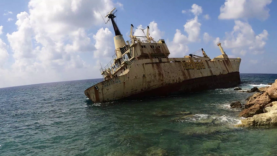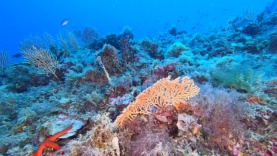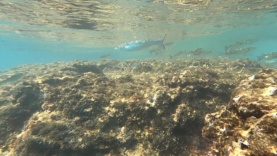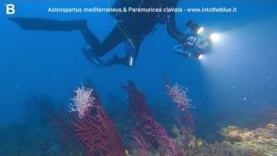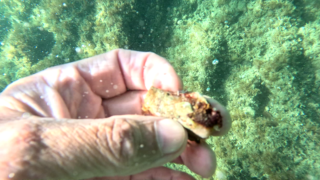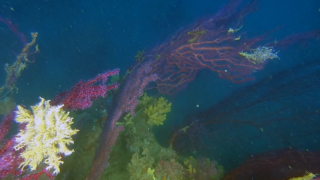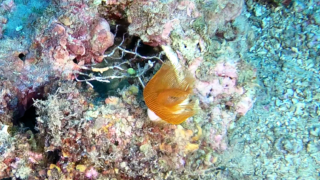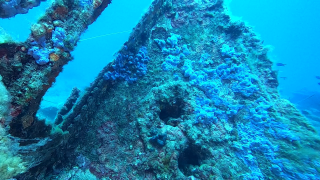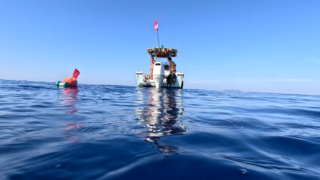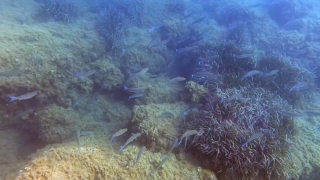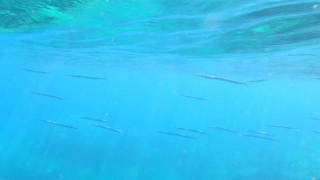Astrospartus mediterraneus & Paramuricea clavata
In this amazing dive among Paramuricea clavata, red Gorgonian, we met numerous Gorgon starfish, Basket star or Astrospartus mediterraneus. We are on a rocky bottom between 49 and 52 meters deep, where we have encountered various species of fish and marine species such as sponges, red scorpionfish, Anthias anthias, red mullet, coocko wrasse and more.
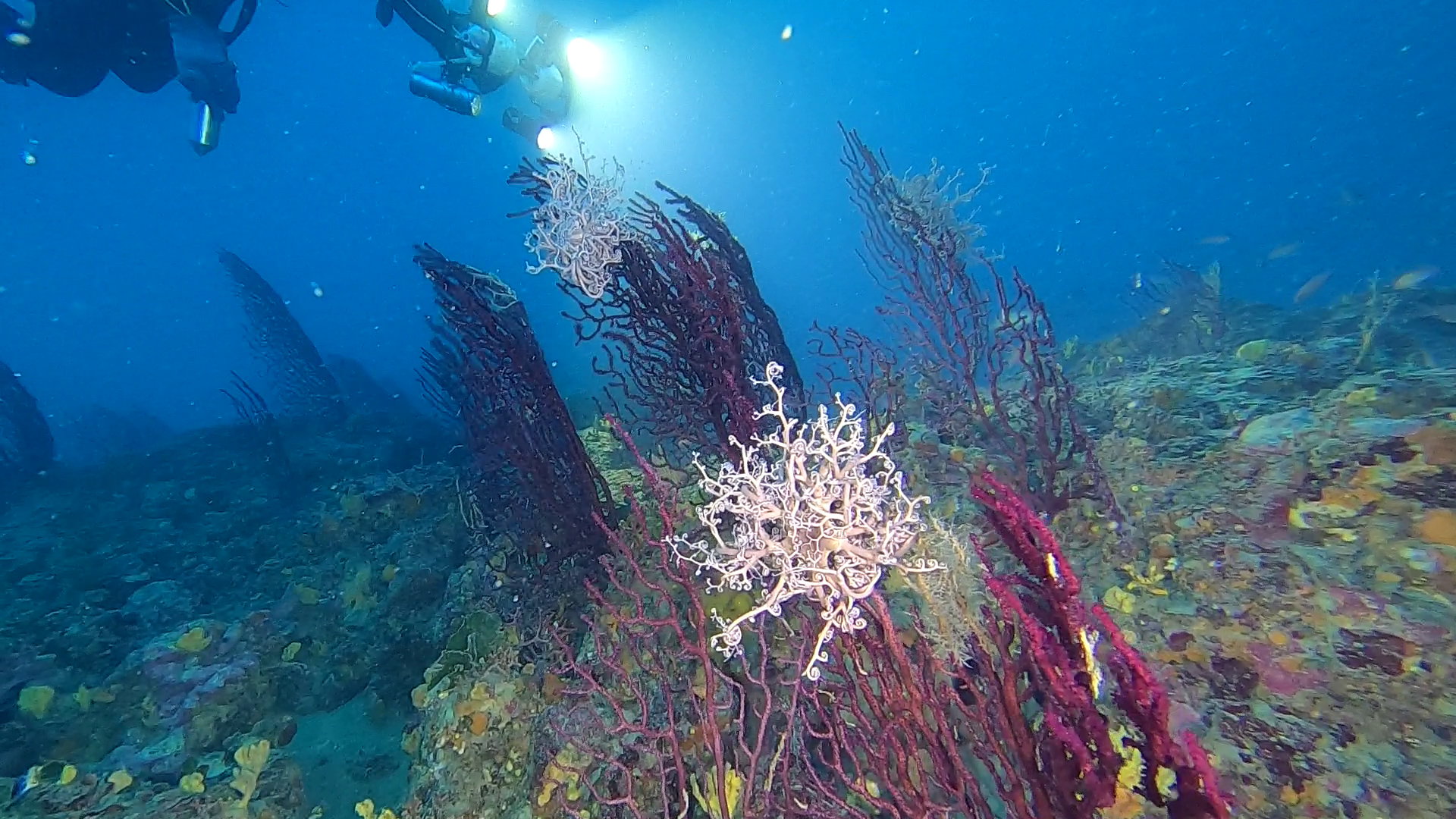
However, we have focused on the Paramuricea clavata and on the Astrospartus mediterraneus which seem to live practically in symbiosis. In reality this starfish climbs on the gorgonians to extend the five branched tentacles, to feed and therefore more than symbiosis it seems almost and the gorgonian star takes advantage of the gorgonians to “fish” higher up. However, the gorgonians that host it are in good health and do not appear to be damaged by the presence of this starfish.
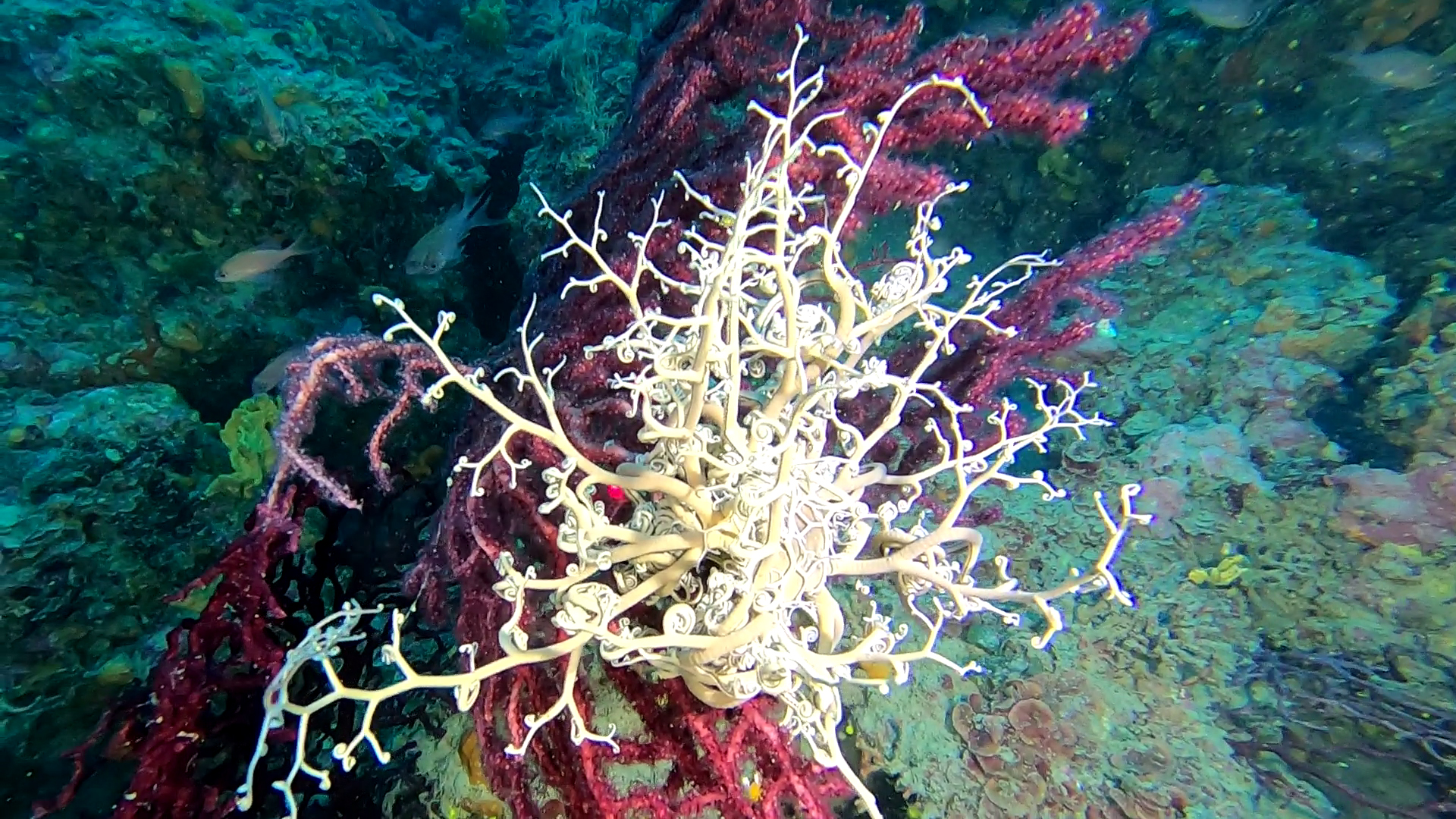
Basket star, Gorgon star (Astrospartus mediterraneus Risso, 1826) is an echinoderm of the Gorgonocephalidae family.
Etymology
The scientific name derives from aster (star in Latin) and spartos (shrub in Latin).
The English name (basket star) derives from the habit of curling up in a basket (basket, in English) during the day with branched arms.
The Italian name of gorgon star derives from the myth of the Gorgons (Medusa, Steno and Euriale) figures of Greek mythology, who had snakes instead hair.
Description
Astrospartus mediterraneus is characterized by five tentacles, each branched several times, with which it clings to the branches of the gorgonians, which are opened at night to feed. The body has a diameter of 8 centimeters, with the opening of the tentacles the maximum width of the entire animal reaches 80 centimeters.
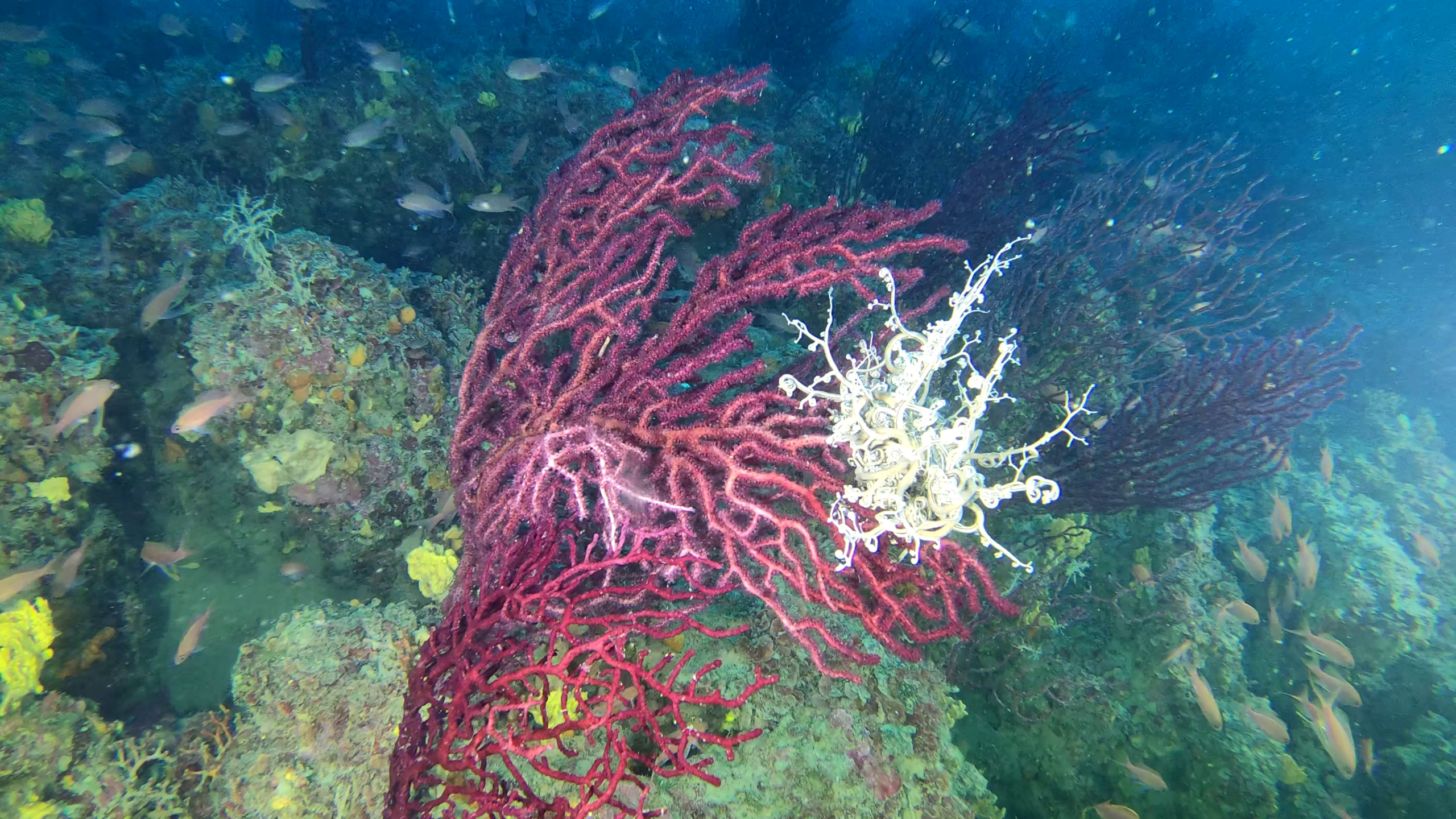
Diet
It is a passive filtering animal which feeds, through its open tentacles, in particular on planktonic microparticles.
Habitat and distribution
Very rare, photophobic and typically nocturnal. It is found in the western Mediterranean Sea, on the coast of the Atlantic Ocean and on the coasts of Spain and Senegal; common in Algeria and Morocco. It lives from a depth of 30 meters up to 800 metres, generally on branches of Paramuricea clavata, Eunicella singularis or on sponges.
https://it.wikipedia.org/wiki/Astrospartus_mediterraneus

Red gorgonian (Paramuricea clavata (Risso, 1826)) is a Mediterranean gorgonian of the Plexauridae family.
It looks like an arborescent formation with dense dark red branches, which form fans that can reach dimensions of up to one meter in height. The terminal branches, claviform, are sometimes yellow. The skeleton is protein; the surface has calcareous spicules which act as a refuge for the retractile polyps.
The colonies take on the appearance of a real submerged forest, among whose branches a remarkable biodiversity develops, made up of fish and invertebrates of all species.
Distribution and habitat
It is a typical species of the Mediterranean Sea where it populates the rocky bottoms usually deep from 25-30 up to over 100 meters, favoring the crevices not reached by light. It is in fact a sciaphilous species, that is a lover of the penumbra.
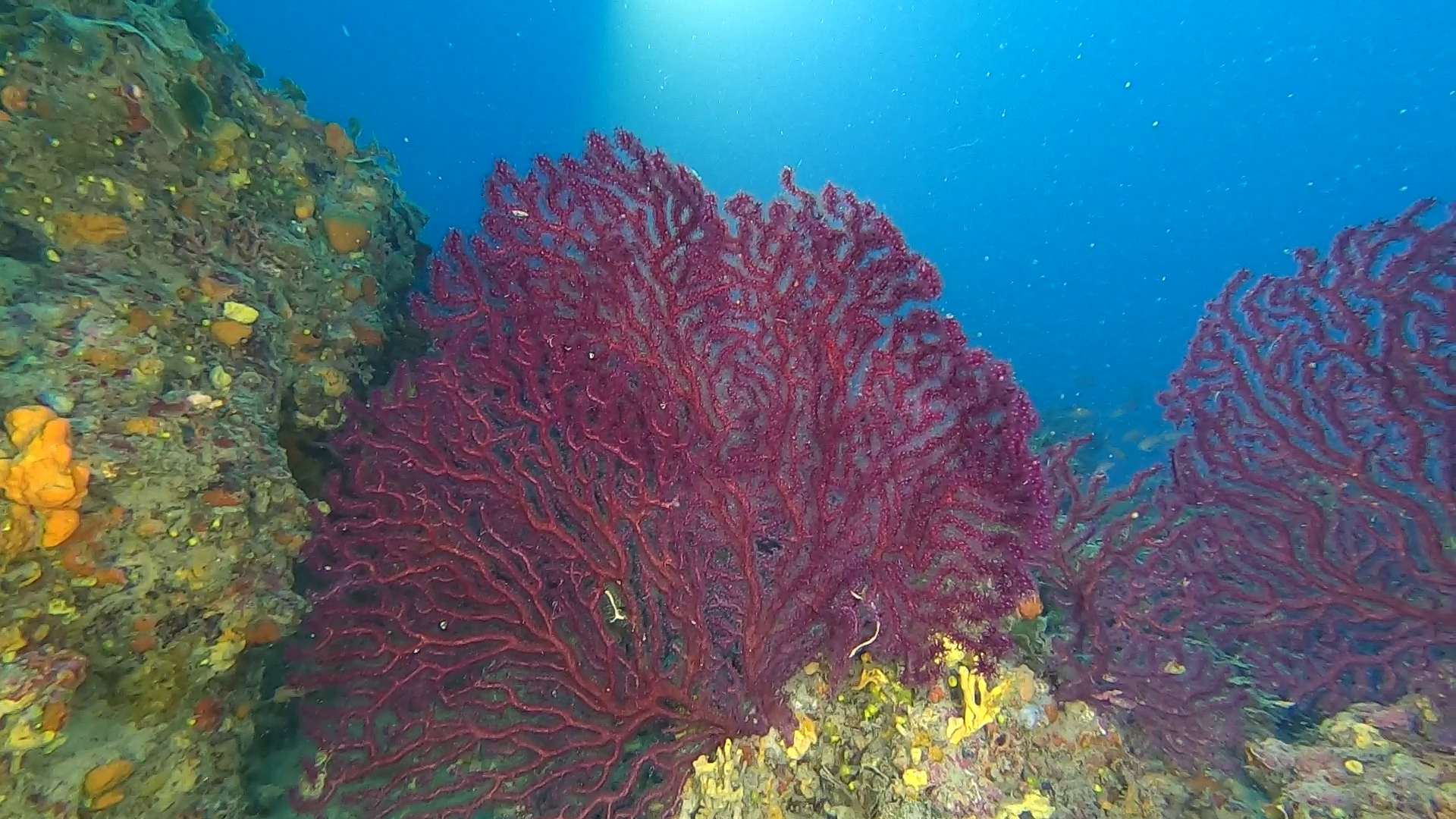
Storage
The IUCN Red List classifies Paramuricea clavata as a vulnerable species.
In the past, red gorgonian colonies were very numerous, today we are witnessing their decline throughout the Mediterranean, especially in surface waters as a result of water heating.
Other factors that threaten its survival are the indiscriminate collection by divers, and the damage inflicted by trawling.
It is a very fragile and very slow growing species. By virtue of these characteristics it is considered a biological indicator of the balance of the marine ecosystem.
https://it.wikipedia.org/wiki/Paramuricea_clavata
http://www.iucn.it/scheda.php?id=1248331264
Gallery

